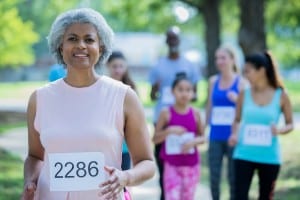Hot flashes are the most common symptom of menopause, but there is still no clear answer as to why they happen.
While there is no way to prevent or cure hot flashes, doctors can help women avoid triggers and manage their symptoms.
Regional One Health’s Certified Menopause Practitioners work with their patients to empower them to make the right decisions to improve their quality of life.
Say the word menopause, and one of the first images that pops to mind is a woman standing in front of an air conditioner vent or refrigerator, trying to fight a hot flash.
This caricature is unfair – menopausal women are much more than their symptoms – but it isn’t entirely inaccurate.
Regional One Health Certified Menopause Practitioners Pallavi Khanna, MD, OB/GYN and Diane Todd Pace, PhD, APRN, FNP-BC, NCMP, FAANP, FAAN say 80 percent of menopausal women will experience hot flashes. They are the most common symptom of menopause.
Menopause symptoms such as hot flashes usually go away on their own, but it can take a long time – between 7 and 10 years on average. Dr. Pace said about 10-15 percent of women have vasomotor symptoms into their 80s, and they often last longer for African-American women.
For as prevalent as they are, hot flashes are not well understood.
“Even though there have been decades of study into vasomotor symptoms, to this day we don’t know exactly why it happens,” said Dr. Pace.
Dr. Khanna said a hot flash is sometimes triggered by an outside influence. “It could happen because your body isn’t able to adjust quickly to the surrounding environment,” she said. “Your body needs to lose some heat, so it rapidly sweats it out.”

During a hot flash, a woman will feel a sudden rush of heat. She may start sweating and experience a rapid heartbeat.
During a hot flash, a woman feels a sudden feeling of heat. She may start sweating, and her face may become red and flushed. A rapid heartbeat is also common.
Some women experience hot flashes at night. These are referred to as night sweats, and typically cause the most significant quality of life problems. “If you aren’t sleeping, it affects your psychological wellbeing,” Dr. Pace noted. “That can lead to agitation and even depression.”
Unfortunately, there is no way to “cure” or prevent hot flashes.
Since everyone has different triggers, Dr. Khanna and Dr. Pace suggest keeping a journal to try to pinpoint what sparks your hot flashes. “If you find your triggers, you can do something to avoid hot flashes or help your hot flashes pass more quickly,” Dr. Khanna said.
Common triggers include:
- Smoking
- Alcohol
- Caffeine
- Spicy food
- Stress
However, as Dr. Khanna noted, “There are a lot of different triggers. Thinking about something or seeing someone could be a trigger. For some women, the very fact that they’re thinking of a hot flash can trigger a hot flash.”

Regular exercise such as jogging, walking, swimming or cycling is a great way to regulate hot flashes.
That’s daunting, but there are ways to ease the discomfort. “There are many non-pharmaceutical options we can talk about,” Dr. Pace said. “Even if studies say they don’t actually work any better than a placebo on a large scale, they do work for some women so they are worth trying.”
Deep, slow breathing exercises are one option. You can practice them as a preventative step or use them when you feel a hot flash beginning.
Try to stay cool. During the day, loose clothing and fans may help. For night sweats, try wicked sheets, a “chill pillow” or a bed fan, which directs air on you without disturbing your partner.
Regular exercise like walking, swimming or cycling can also regulate hot flashes.
Providers can also talk to patients about medications. Supplements, hormone therapy and drugs used for incontinence and blood pressure have shown promise.
No matter what, it is important to find a practitioner who specializes in menopause care. As Certified Menopause Practitioners, both Dr. Khanna and Dr. Pace have done extensive study on how to help women deal with the symptoms and medical issues linked to menopause.
Their goal is to use that knowledge to empower their patients. “We provide patients with the latest research and best information we have so they can make an educated decision,” Dr. Pace said. “We provide our expertise, but our patients make the decisions about their health.”